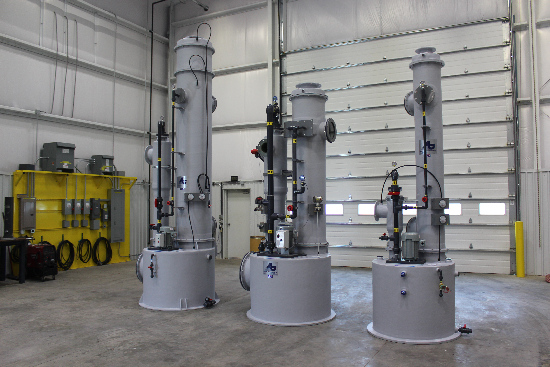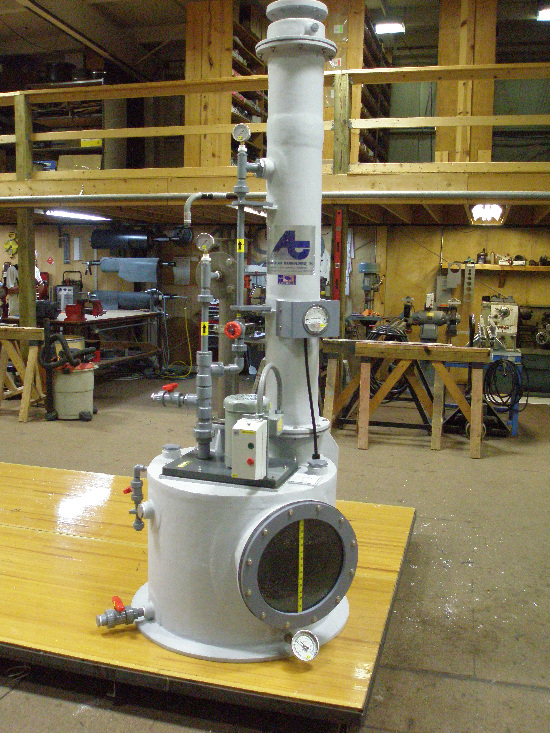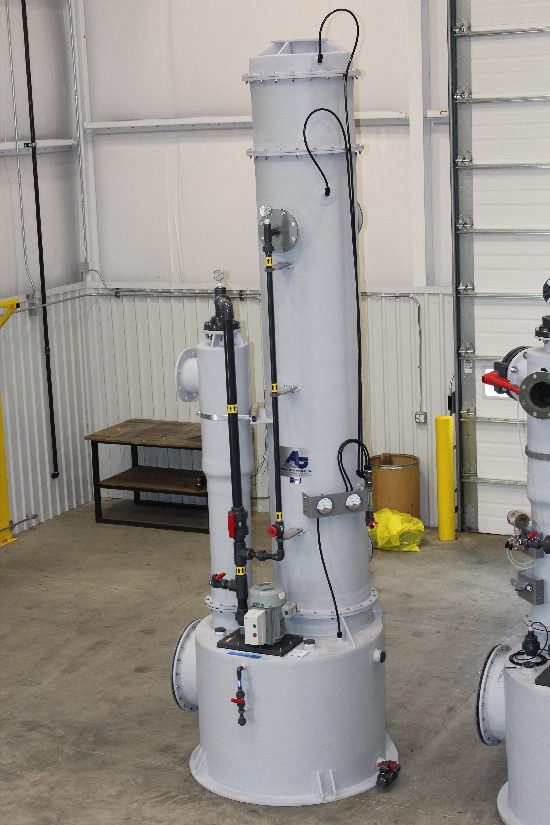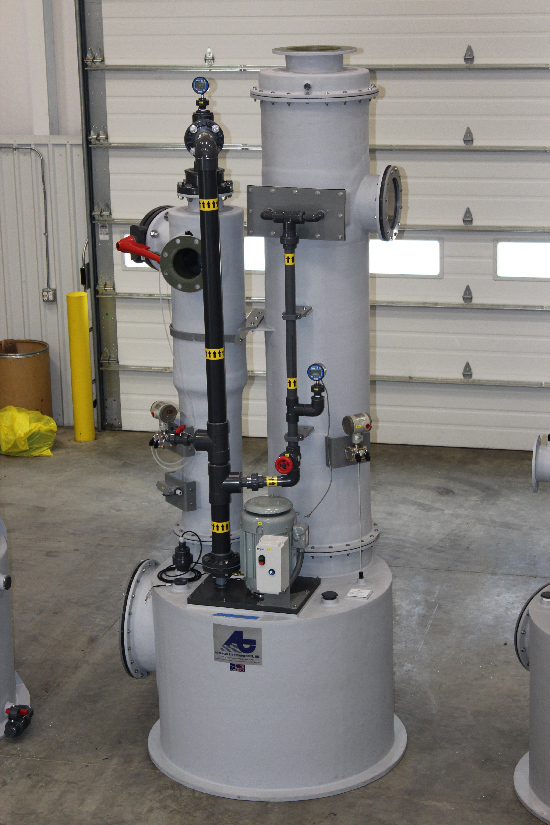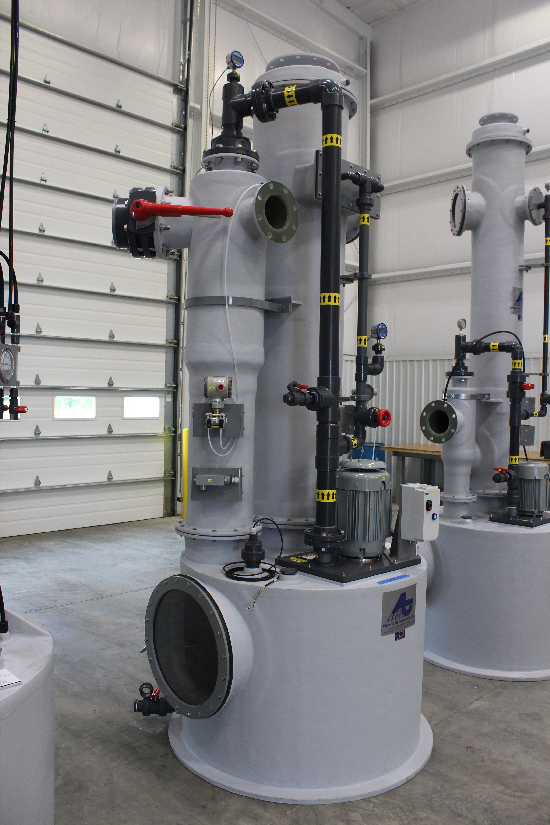AAT, Inc. designs with many different scrubber types, including packed columns, tray columns, spray towers, and ejector-venturis. This latter device is especially suited for low volume, high concentration gas streams, as is typically the case with CVD exhaust streams. Its openness facilitates handling of scrubbing liquor high in suspended solids. It not only scrubs using an extremely high liquid-to-gas ratio, but it also provides motive for exhausting the CVD reactor(s). We offer complete wafer scrubber packages, including instrumentation and controls, skid-mounting of equipment, and start-up. Semiconductor wafers are manufactured using a variety of Chemical Vapor Deposition (CVD) processes. The silicon structure of a wafer is built up using silane (SiH4), and semiconductor properties are created by interstitially depositing elements, such as arsenic and phosphorous. The sources for these elements, commonly called doping agents, are the respective hydrides arsine (AsH3) and phosphine (PH3). All of these compounds are pyrophoric and toxic, and therefore need to be scrubbed when evacuated from the CVD reactor. To achieve high removal efficiencies, an oxidizing agent is required, rather than relying on water scrubbing or caustic scrubbing. Common scrubbing oxidizers include sodium hypochlorite, hydrogen peroxide, and potassium permanganate. Two of the by-products, silicic and arsenious acids, are insoluble in water but are soluble in strong bases. Therefore, to minimize solids accumulation within the scrubber, the scrubbing solution should be maintained at high pH. Since these gases spontaneously ignite in air, air cannot be used as a means of diluting high inlet concentrations. To accomplish dilution, scrubbed gas may be recycled back to the scrubber inlet. This has the advantage of ensuring good gas distribution, turbulence, and contacting in the scrubber by increasing the scrubber flow beyond what otherwise might just be a “trickle” of gas.
